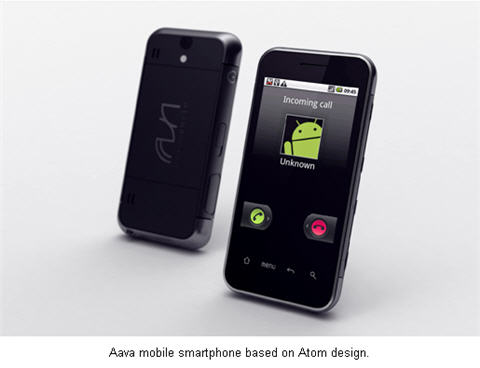Intel makes its smartphone move with latest Atom, but faces crowded field

Intel on Wednesday officially unveiled its latest Atom processor, which is designed for devices such as smartphones, tablets and handheld gadgets. The big question is whether the Atom will be able to gain a foothold in the crowded smartphone market.
The chip giant's latest Atom, formerly known as "Moorestown", has a bevy of strengths. It supports multi-tasking, 1080p video, 3D graphics and other PC-ish items to smaller devices. Simply put, Intel has cut the power consumption in the Atom down to the point where it can be a consideration for smartphone makers.
Intel's launch signals that the company is transitioning from its focus on netbooks to tablets and smartphones. The big plan is to use these lower power Atoms in tablets in the second half and smartphones in the first half of 2011.
But there is an elephant in the room. Most smartphones are built on the ARM infrastructure. Perhaps Intel gets Atom into tablet designs, but the smartphone chip market with ARM mobile chips. Apple has its own chip, Nvidia is in the field and Qualcomm is there too with Snapdragon. Toss in ARM Holdings, Texas Instruments and a few others and you have one crowded field, which is also looking to move upstream to netbooks.
For Intel, the latest Atom is "opening the door for Intel Architecture [IA] in the smartphone market segment," but it won't be easy. How many smartphone makers are going to really tweak their ARM-based architectures?
However, you can never count Intel out. The Atom platform rolled out Wednesday includes the Atom Processor Z6xx Series Family, a platform controller called MP20 and a mixed signal IC. Add it up and Intel says it can more than a 50 percent power reduction on idle, 20 percent in audio and a 2 to 3 times cut on video. The promise is that Intel will deliver a "PC-like" visual experience with speeds up to 1.5 GHz for upscale smartphones and 1.9 GHz for tablets and handhelds.
These chips will work on Android, Meego and Moblin, support Wi-Fi, 3G and WiMax.
Intel can be a smartphone player, but it won't be easy. Analysts appear to be in a wait-and-see mode. Barclays Capital analyst Tim Luke summed it up:
Intel formally launched its new 45nm Moorestown processor at a meeting in San Francisco marking further steady progress in its efforts to target the market for applications processors for handsets and tablets. We continue to believe Intel may need to launch its 32nm Medfield offering before seeing significant traction in this highly competitive arena but recognize Intel is making solid progress on both power reduction and performance across video and graphics...Intel is not outlining a timeline for its next generation 32nm offering of Medfield, however, we would expect a 2011 timeline for this key initiative. We believe an even lower power system on a chip on 32nm may help Intel in breaking into a market where it competes with Qualcomm's integrated baseband/app processor and SnapDragon offerings as well as TI's OMAP offerings along with the internal solutions such as Apple's A4.
